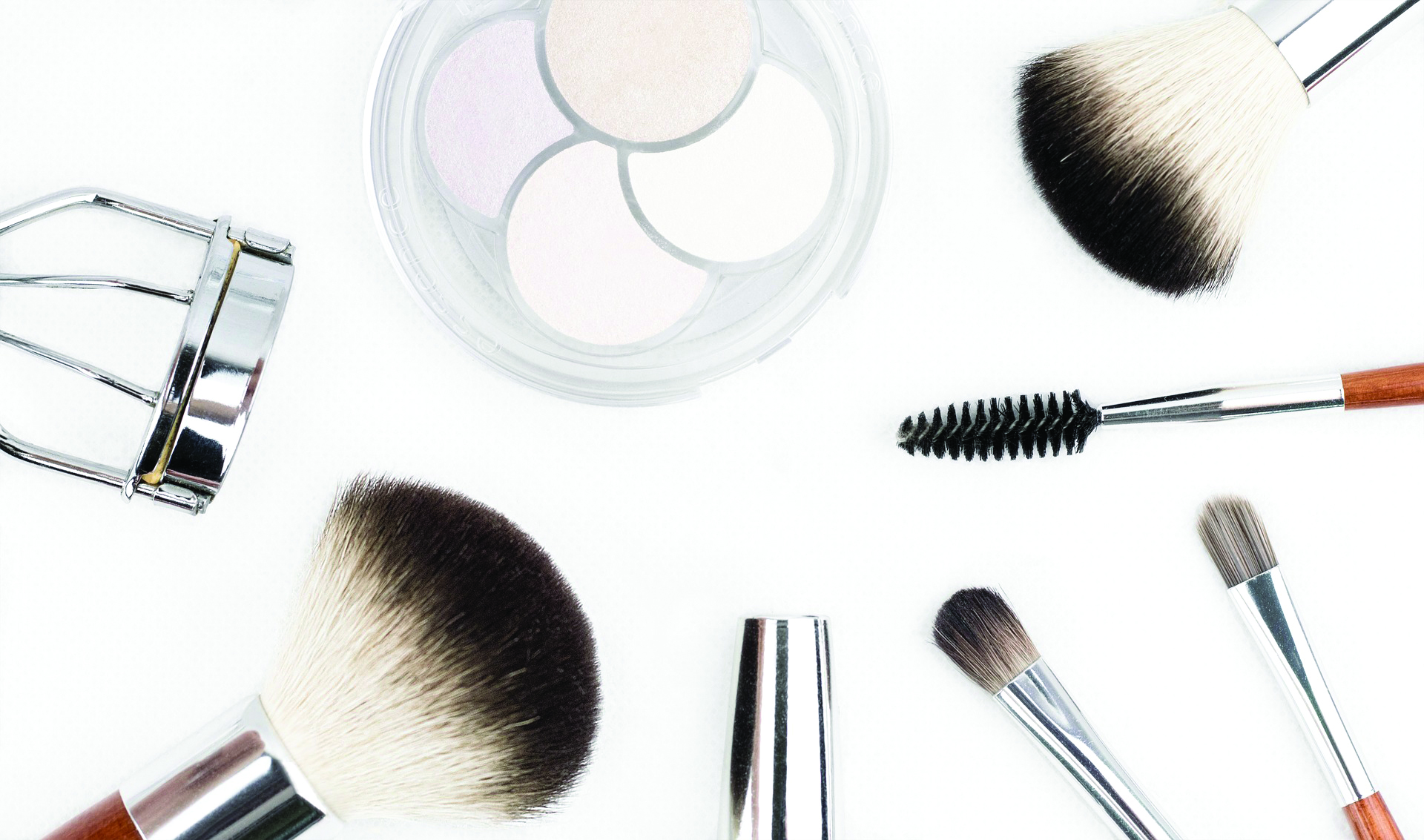From warpaint to wings, there are a lot of names for makeup and what we do with it. Decades have been defined by certain looks — lookin’ at you, pencil-thin ‘90s brows — and if we go back far enough in time, a killer look was often all too literal, with many cosmetic products containing high quantities of lead. Controversy still abounds when it comes to the ingredients and testing procedures behind our picture-perfect looks, but the fact that this controversy is so well-known simply speaks to the degree that makeup is en- trenched within our global consciousness. Today, makeup artists (MUA’s) and reviewers are as much a part of our celebrity culture as actors and musicians, with high-profile personalities clocking anywhere between two million and 34 million views on individual YouTube videos alone, to say nothing of the equally substantial revenue brought in from their own personal cosmetics lines. There’s no denying that makeup is an industry almost as old as civilization itself, as lucrative as it is protean, but is it an art?
For Celeste Tatlow, a local professional makeup artist and drag performer, the answer is emphatically yes, but with varying shades of complexity. At its heart, Tatlow considers makeup and its everyday application to be an exercise in “taking authenticity to the extreme.”
“Makeup gives a different sense of individuality,” she says, “regardless of the day, I can be whoever it is that I want — soft and feminine or hard and edgy or masculine — I’m still the same person, but showcasing the different aspects of my personality.”
Freedom of expression is a crucial element in Tatlow’s day-to-day use of cosmetics. “My favourite part is that at the end of the day, I get to wash it all off and it’s still me underneath it all, it’s just being able to put a little something else out there,” she says, “I have a great love for colour and I love being able to slap that on and just have it be interesting.”
There’s more to makeup than simply getting those eyebrows on fleek, though. Skillful application of makeup on oneself is admirable, but as Tatlow notes, working in the field of makeup artistry requires more than just talent. “Doing makeup on yourself is completely different from doing makeup on someone else,” she observes, “because you’re taking their physical attributes and emphasizing them.” In the case of MUA’s for hire, sometimes these attributes are completely unknown until the day of a photoshoot or an important event, and the client’s features may be totally different from those of the MUA.
Understanding colour theory, light theory, and various methods of dealing with different facial structures are all part and parcel of achieving a perfect look, and take time and practice to learn.
As a drag performer and enthusiast, Tatlow naturally has strong opinions about the performative aspect of drag: “It’s such an artform! I have such respect and adoration for all these drag queens (and kings), taking who they are and putting it out there on a totally different level. It’s magnificent,” she says, adding that the makeup involved in drag is an artform in its own right, beyond the element of performance.
When it comes to classifying makeup, Tatlow considers cosmetics to be in a similar category as costume design in film or painting within the broader category of visual art. Knowing the colour wheel is basic 101, after all, and in the case of special effects makeup, character creation not only depends on artistic vision, but sufficient skill and knowledge of the product in order to bring the character to life. The technical element as much as the theoretical are part of what define makeup as an art for Tatlow.
“My favourite part is that at the end of the day, I get to wash it all off and it’s still me underneath it all, it’s just being able to put a little something else out there.”
— Celeste Tatlow
For Jodi Butler, a former beauty blogger, the artistry of makeup is more complicated.
“Makeup can definitely be an art form,” they say, “though I don’t see how I use makeup to be art. I think because it’s something I do every day and I do pretty well the same thing every day, I don’t see it as exploring something or being creative. It can be art for different people, though.”
Sometimes it’s not simply a matter of how one uses makeup that it becomes more artistic, but a matter of the user’s mindset when it is being used. Butler notes that their relationship with makeup has changed over the years as they used it for different purposes.
“I don’t see makeup as a tool for self-expression, but when I was blogging and I played with colour more, I did,” they say, adding, “Now it’s more like enhancing myself instead of showing a certain feeling or mood. It definitely helps affirm my identity — when I wear certain makeup I feel more like myself.”
Using makeup as a way to affirm identity goes both ways. For some, not wearing makeup is a way to defy gendered expectations, just as makeup helps others project a more androgynous look.
But for all the positive impact that makeup has on our daily lives, our identities, and our entertainment, there are some downsides. Whether you classify it as an art or not, the nature of the industry behind cosmetic production and consumption comes with its own host of problems.
Tatlow notes that the marketing and financial commitment involved in some higher end or brand name products can be very elitist. “If anything, product is product,” she says. “There shouldn’t be any shame in using Walmart brand in the cosmetics industry is deceptive. “It still goes through similar production processes that release greenhouse gases,” Butler says, adding that even the sheer amount of packaging on supposedly environmentally friendly items is often counterproductive.
What’s interesting about these criticisms of the cosmetics industry is that they mirror similar issues within more traditional art forms. The use of fur and other animal products in runway fashion is an age-old concern, just as the amount of energy used in film production can reach staggering heights. A 2016 study from Harvard estimates that an average 300 million dollar film produced in Vancouver emits 660 tons of carbon dioxide from flights and shipping alone. Yet, neither film nor fashion ever seem to face the same scrutiny as to whether they are art.
It is possible that gender and how we as a society value traditionally “feminine” things have a play in why makeup continues to be questioned as an art form — the internet meme of young men insisting they take women swimming as a first date is proof enough that not everyone appreciates the time and technique involved in a well-applied face — but the reality is that cosmetics are a universal tool. While runway models may be an obvious instance of when men wear makeup, it nonetheless is becoming more common for men to wear makeup in their everyday lives. Cosmetics are also an ever present aspect of work for news anchors, actors, and many musicians. Even if you don’t consider makeup an art, you can’t deny that it is an integral aspect of many other recognized art forms.
Maybe makeup’s capacity to divide opinions is yet one more reason for it to be considered art. After all, one of art’s defining characteristics is its subjectivity.





0 Comments